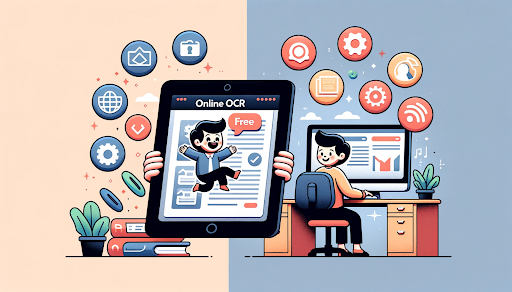The Evolution of OCR Technology: Past, Present, and Future
The Dawn of OCR: A Historical Glimpse
The tale of Optical Character Recognition (OCR) is as intriguing as the technology itself. In its infancy, OCR systems were mechanical, comprising templates and light sensors that could read characters from specialized fonts. Introduced in the early 20th century, they were primarily designed to aid the blind. These devices, however revolutionary at their time, were cumbersome and lacked versatility.
As we ventured into the late 20th century, OCR took a digital turn. Software replaced mechanical counterparts, and with the advent of machine learning, the capability to recognize an array of fonts and handwritten texts became a reality. These were not just milestones for OCR but also pivotal moments for digital archiving and document management.
Modern OCR: Realizing the Potential
Today’s OCR technology is leagues ahead of its predecessors. Thanks to deep learning and neural networks, modern OCR can now recognize text from various languages, in diverse fonts, and even decipher skewed or slightly distorted text with impressive accuracy. This advancement is particularly useful for businesses aiming to digitize their records or for individuals keen on converting old printed materials into editable formats.
One such tool that stands out in the current OCR landscape is https://www.onlineocr.net/ which allows users to seamlessly convert an image to text. The platform’s ability to transform scanned PDFs, images, and photos into editable text or even convert PDFs to WORD or EXCEL while preserving layout is a testament to how far OCR has come. What’s more appealing is its user-friendly approach. No payment, no registration, and an assurance that all uploaded documents are deleted post-conversion make it a go-to choice for many.
Comparatively, other tools and software, whether online platforms like ‘ABBYY FineReader’ or offline solutions such as ‘Adobe Acrobat’, often come with intricate user interfaces or have limitations unless a premium version is purchased. Thus, the simplicity and efficiency of OnlineOCR truly shine in the vast sea of OCR solutions.
Challenges and Innovations
Despite its advancements, OCR isn’t without its challenges. Factors like low-quality source images, complex layouts, or text superimposed on busy backgrounds can sometimes stump even the most sophisticated OCR systems. There’s also the challenge of multilingual recognition, especially when dealing with languages that don’t employ the Latin script.
Yet, the ever-evolving nature of technology means that solutions are always on the horizon. Enhanced image preprocessing, improved algorithms, and the growing application of AI promise even better accuracy and versatility in the near future.
Gazing into the Future: The Next OCR Frontier
The road ahead for OCR is replete with possibilities. We are beginning to see the integration of OCR with Augmented Reality (AR), allowing real-time translation of text in a live environment. Imagine pointing your device at a foreign-language signboard and having it instantly translated into your native language. The implications are profound, especially for travelers and international businesses.
Furthermore, as OCR becomes more integrated into our everyday devices, its applications will only grow. Smart homes could read out recipes from physical cookbooks, or cars could interpret road signs in real-time for drivers.
Concluding Thoughts
Tracing the journey of OCR from its rudimentary mechanical beginnings to its current state-of-the-art digital prowess provides a fascinating glimpse into how technology can transform over time. Tools like OnlineOCR not only exemplify the present-day potential of OCR but also hint at a future where the line between the physical and digital worlds becomes increasingly blurred.
For anyone seeking an efficient and user-friendly OCR solution, the choice is clear. By offering a seamless experience from image to text, OnlineOCR ensures that the legacy of OCR continues to thrive and evolve, meeting the ever-changing needs of its users.







